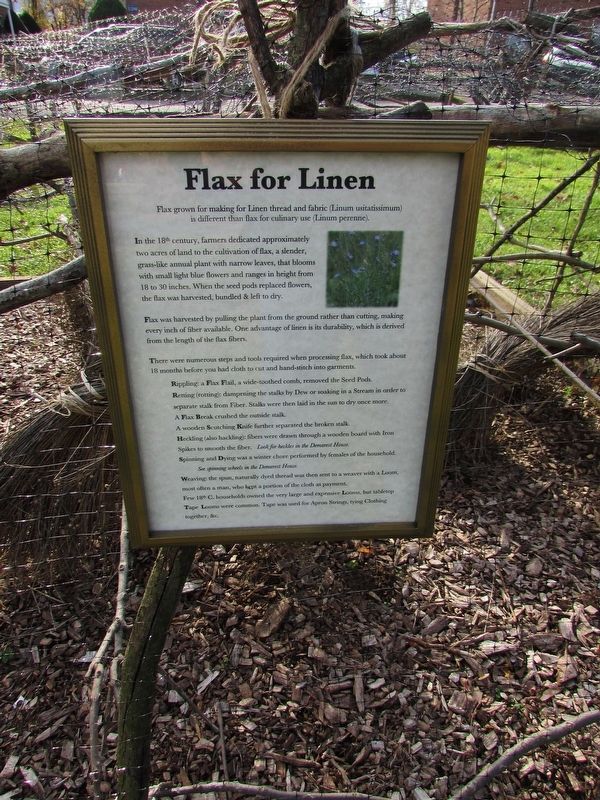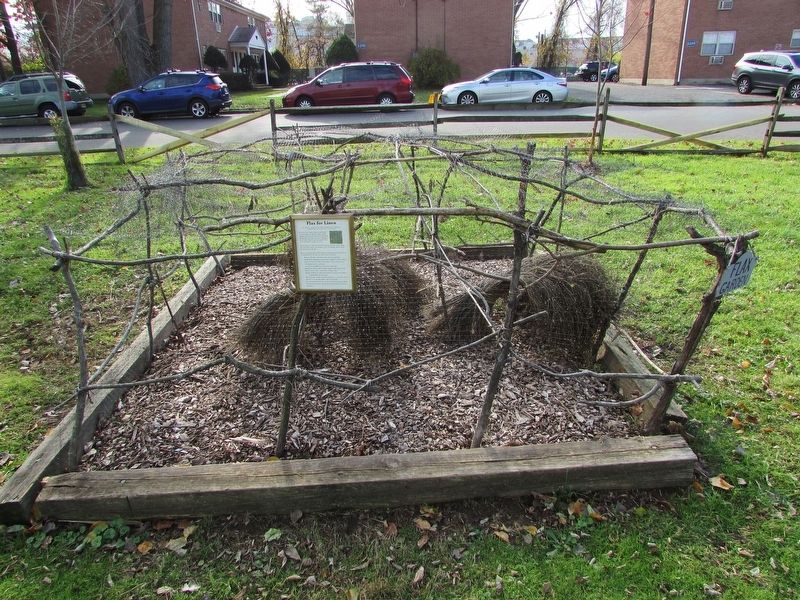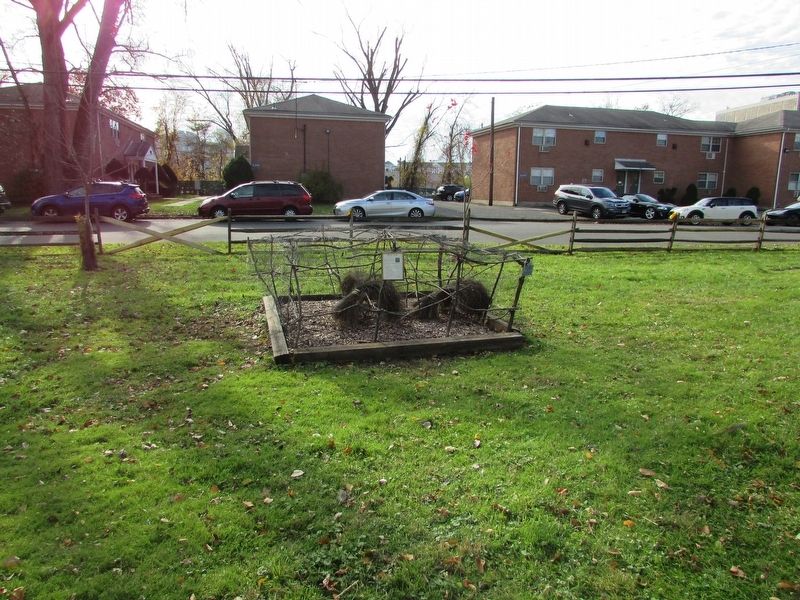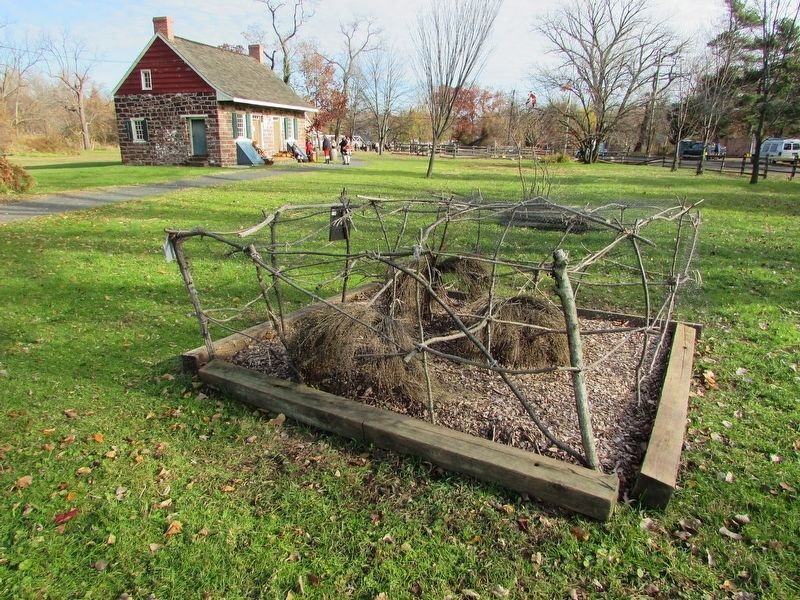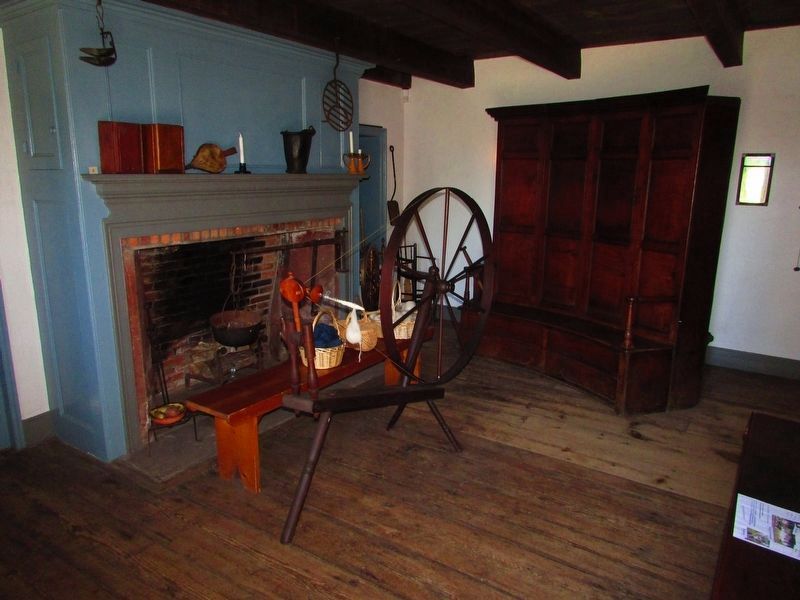River Edge in Bergen County, New Jersey — The American Northeast (Mid-Atlantic)
Flax for Linen
In the 18th century, farmers dedicated approximately two acres of land to the cultivation of flax, a slender, grass-like annual plant with narrow leaves, that blooms with small light blue flowers and ranges in height from 18 to 30 inches. When the seed pods replaced flowers, the flax was harvested, bundled & left to dry.
Flax was harvested by pulling the plant from the ground rather than cutting, making every inch of fiber available. One advantage of linen is its durability, which is derived from the length of the flax fibers.
There were numerous steps and tolls required when processing flax, which took about 18 months before you had cloth to cut and hand-stitch into garments.
Rippling: a Flax Flail, a wide-toothed comb, removed the Seed Pods.
Retting (rotting): dampening the stalks by Dew or soaking in a Stream in order to separate stalk from Fiber. Stalks were then laid in the sun to dry once more.
A Flax Break crushed the outside stalk.
A wooden Scutching Knife further separated the broken stalk.
Heckling (also hackling): fibers were drawn through a wooden board with Iron Spikes to smooth the fiber. Look for heckles in the Demarest House.
Spinning and Dying was a winter chore performed by females of the household. See spinning wheels in the Demarest House.
Weaving: the spun, naturally dyed thread was then sent to a weaver with a Loom, most often a man, who kept a portion of the cloth as payment.
Few 18th C. households owned the very large and expensive Looms, but tabletop Tape Looms were common. Tape was used for Apron Strings, tying Clothing together, &c.
Erected by Bergen County Historical Society.
Topics. This historical marker is listed in these topic lists: Agriculture • Colonial Era.
Location. 40° 54.782′ N, 74° 1.855′ W. Marker is in River Edge, New Jersey, in Bergen County. Marker is on Main Street, on the left when traveling east. Touch for map. Marker is in this post office area: River Edge NJ 07661, United States of America. Touch for directions.
Other nearby markers. At least 8 other markers are within walking distance of this marker. Old Demarest House (a few steps from this marker); Historic New Bridge Landing (a few steps from this marker); a different marker also named Historic New Bridge Landing (within shouting distance of this marker); New Bridge Landing (within shouting distance of this marker); The Zabriskie House (within shouting distance of this marker); The (Von) Steuben House (within shouting distance of this marker); a different marker also named New Bridge Landing (within shouting distance of this marker); Timeline of Events at New Bridge in the American Revolution (within shouting distance of this marker). Touch for a list and map of all markers in River Edge.
Credits. This page was last revised on November 24, 2021. It was originally submitted on November 24, 2021, by Bill Coughlin of Woodland Park, New Jersey. This page has been viewed 176 times since then and 31 times this year. Photos: 1, 2, 3, 4, 5. submitted on November 24, 2021, by Bill Coughlin of Woodland Park, New Jersey.
